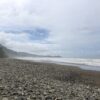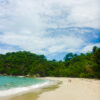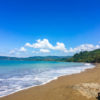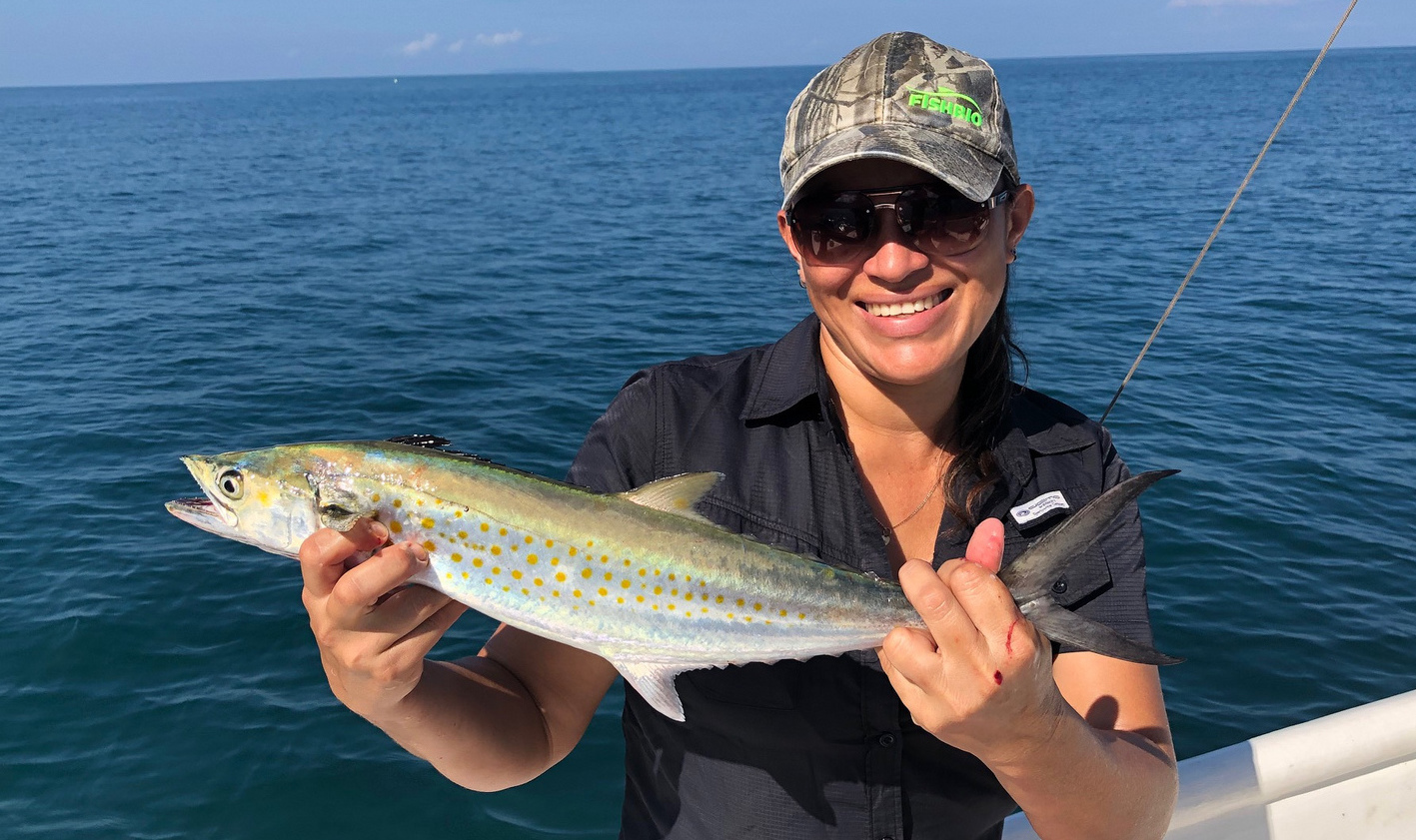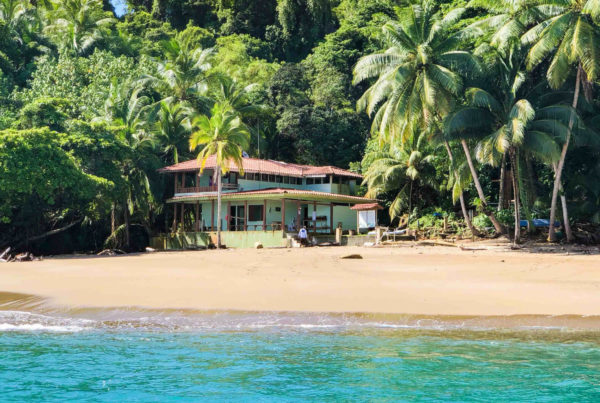Sea turtles are well-adapted to life in the ocean, but require sandy beaches for nesting and laying their eggs. Five of the world’s seven species of sea turtle come to Costa Rica, and at Casa Roja there is a good chance to see one swimming nearshore or on the beaches. Green, olive ridley, hawksbill, and leatherback sea turtles have all been found nesting on the Osa Peninsula, either in Corcovado National Park or farther south. Some also nest at Playa Tortuga, about 15 miles (as the crow flies) north of Casa Roja. You might also spot one of these species while snorkeling in the reefs near Caño Island or Golfo Dulce – and could even witness some mating at sea!
Newly hatched juvenile sea turtles migrate up to 7,000 miles across oceans to find food. When they reach maturity (at 10-50 years old, depending on the species) they navigate the seemingly impossible journey back to the nesting beaches where they were born to lay their eggs. Most of the species are listed as endangered or vulnerable because threats like poaching, overharvesting, coastal development, removal of coastal vegetation, alteration of nesting beaches where they nest, installation of artificial lights that disorient turtles, incidental fishing gear, pollution, and climate change have taken a toll on their populations. However, conservation areas, ecotourism efforts, and ongoing research are all working to protect these peaceful, prehistoric-looking animals.
 Here are some facts about the sea turtles found in Costa Rica:
Here are some facts about the sea turtles found in Costa Rica:
- The Olive ridley sea turtle (Lepidochelys olivacea) is the most common sea turtle species and is listed as vulnerable. They are known for their mass-nesting events, known locally as “arribadas,” which are difficult to predict beforehand, but primarily occur at Ostional National Wildlife Refuge and Nancite Beach on Costa Rica’s North Pacific coast, as well as the southern Osa Peninsula. During an arribada period in Ostional, around 100,000 females can come to the beach to lay eggs. Olive ridleys are the primary turtle seen in the Osa Peninsula.
- Green sea turtles (Chelonia mydas) are endangered, and while they nest on both of Costa Rica’s coast, they are known for their important nesting site at Tortuguero National Park on the Caribbean side.
- Leatherback sea turtles (Dermochelys coriacea) are the largest sea turtle, weighing reaching up to 2,000 pounds and reaching up to eight feet in length. They are highly migratory, swimming over 10,000 miles, and can dive near 4,000 feet deep.They are listed as endangered, and their primary nesting beaches in Costa Rica are along the Caribbean and north Pacific coasts.
- Hawksbill sea turtles (Eretmochelys imbricata) are the rarest endangered sea turtles and are solitary nesters. Their major nest sites in Costa Rica are at Cahuita National Park and Gandoca-Manzanillo National Refuge on the southern Caribbean coast.
- Loggerhead sea turtles (Caretta caretta) do not nest in Costa Rica, but may be spotted foraging in the Pacific and Atlantic Oceans. They are listed as endangered.

There are plenty of opportunities to spot sea turtles in the region around Casa Roja. Olive Ridley turtles have a year-round primary nesting site at Playa Carate on the southern Osa Peninsula, peaking in June–December, and smaller ones in Corcovado National Park and at Playa Tortuga, peaking in September–October. Hawksbills have been seen nesting near Quepos, and all along the southern Osa Peninsula from March–October. They are also known to occur in the waters of Golfo Dulce. Green sea turtles are common on beaches near Carate and have nest sites in Corcovado National Park as well as near Playa Tortuga year-round, but peaking in December–March. Leatherbacks sometimes nest at Playa Carate and Playa Tortuga from December–March.

To view sea turtles within a protected area, a guide is usually required. It is recommended that a reservation be made one week in advance to confirm that turtles are nesting or hatching in the area you wish to visit. A few rules that apply to every wildlife encounter, but are especially important for the long-term survival of turtles, include:
- Be quiet and maintain a wide distance from animals on land or in the water
- Do not walk on the beach where turtles may be nesting
- Do not use fires, flashlights, camera flashes, or lights that may deter nesting
- Never move, block, or intercept adults, eggs, or hatchlings
- Read the Wildlife Selfie Code of conduct before photographing any animal
With any luck, you can have a safe and memorable encounter with one of these majestic reptiles.


